Review of New Spectroscopic Instrumentation 2019
Our annual review of products introduced at Pittcon or during the previous year
Our annual review of products introduced at Pittcon, or during the previous year.
As in the past, this year's edition of our annual review of new spectroscopy products includes products launched at Pittcon 2019 or elsewhere during the past twelve months (Table I). Given the extensive scope of this review, we are only able to include products for which the manufacturer submits a completed form, in response to the survey sent out by Spectroscopy, or our additional, and rather intensive, efforts to encourage submissions. One of the points of interest in the instruments featured here is a definition of those instruments that are of most interest, or are considered the most innovative, or are the most important to the field. This is, of necessity, a subjective evaluation, and involves a selection process from all the products submitted.
In this annual review, we like to highlight the product awards given out by the Pittcon organization. Starting two years ago, the selection methods and criteria were changed from what were then called the Editor's Choice awards, as well as the nature of the awards. The awards are now called the Pittcon Total Excellence Awards. A selection committee, consisting of a blue-ribbon panel of experts, evaluates the entries based on ingenuity, creativity, implementation, and outcomes. Also, companies are segregated into small, medium, and large categories, based on sales figures. This division allows companies in each class to compete with others within that same class. Therefore, there are three awards of each type (gold, silver, and bronze) in each company category, for a total of nine awards. We are pleased to note that some spectroscopy companies were winners in this competition. These include:
- In the small company category: (<$10,00,000), Pendar Technologies won bronze for its system for standoff Raman and Raman measurements of dark materials.
- In the medium-sized company category ($10,000,000 to $100,000,000), Raptor Photonics won gold for its high-definition indium gallium arsenide (InGaAs)–based infrared (IR) camera.
- In the large company category (>$100,000,000), Bruker won bronze for a new XRF analyzer that is fully automated and faster than previous XRF instruments.
There is another first among these Total Excellence Awards: Previously, no company or product won twice in two successive years, or for the same product. Last year, Gate Scientific won an Excellence award for its temperature-sensing stir bar; this year, it also won for it pH-sensing stir bar, making it the first time a company has won two excellence awards for substantially similar products. Although this product does not involve spectroscopy, the phenomenon of a double-winner caught our attention.
The review that follows is organized alphabetically, and categorized by wavelength region or type of spectroscopy (mid-IR, X-ray, Raman, and so on), except that we put the two noninstrument categories (accessories and components) at the end. We arrange our review to allow readers to compare instruments from different manufacturers, although this process sometimes classifies handhelds with high-end research tools. The categories used to classify the products are:
Atomic spectroscopy
Fluorescence
Imaging
Mass spectrometry (MS)
Mid-infrared (IR) spectroscopy
Near-infrared (NIR) spectroscopy
Nuclear magnetic resonance (NMR)
Raman spectroscopy
Software
UV-visible spectroscopy
X-ray
Accessories
Components
Our included categories fluctuate year to year, depending upon trends in the submissions. The core spectroscopy headings are consistent, but imaging, for example, has been transient. This year, we did receive products classified as imaging, which warranted that being a category in itself, rather than having us only include imaging versions of various technologies under the parent instrument type. Another category that had been absent for a long time, but is showing up again, is fluorescence. As in the past, the accessories section includes tools used with an instrument (such as sample preparation or attenuated total reflection [ATR] devices), whereas the components section covers parts used within instruments (such as lasers or detectors). The software category covers instrument control and data processing, storage, and transmission, as well as spectral databases (libraries) and other collections of specialized information, including programs that analyze the data.
Broad Trends
We've always tried to identify early indicators of future tendencies. In the past, we could sometimes isolate some spectroscopy-specific trends that were noteworthy. This year, some of the major trends that are likely to affect the universe of spectroscopy are not so specific, but rather are more nearly side effects of large-scale trends that affect the greater digital universe we inhabit. The continuing growth and development of computer technology, and the concomitant growth in the associated technology of the Internet, superimpose their own trends on our own, somewhat smaller, universe. Items that have been showing up in the larger digital world for a while are now starting to appear in ours. These may become trends in the future, and therefore may bear watching for their influence on our activities, and include these not-entirely-independent categories:
Networking
Internet of Things (IoT)
Security
Artificial Intelligence (AI)
"The Cloud"
Some current (and even past) practices may become future trends, if and when they become more widespread and generalized. In the meantime, sporadic mentions of these practices appear in advertisements, in scientific literature, and even in this review. For example, some instrument manufacturers have created a capability of remotely controlling and collecting data from their own instruments (networking) for a long time. I myself was involved in a project like that as long ago as 1986. When that capability expands to include more than one type of instrument, then it would be fair to rename that localized networking as belonging to the "Internet of Things" (IoT), but, in my opinion, I think not until then. Similarly, can the current capabilities of the application of chemometric analysis to instrument data, to perform quantitative and qualitative analysis, be called artificial intelligence (AI), or is that a different type of activity? Only the future will tell.
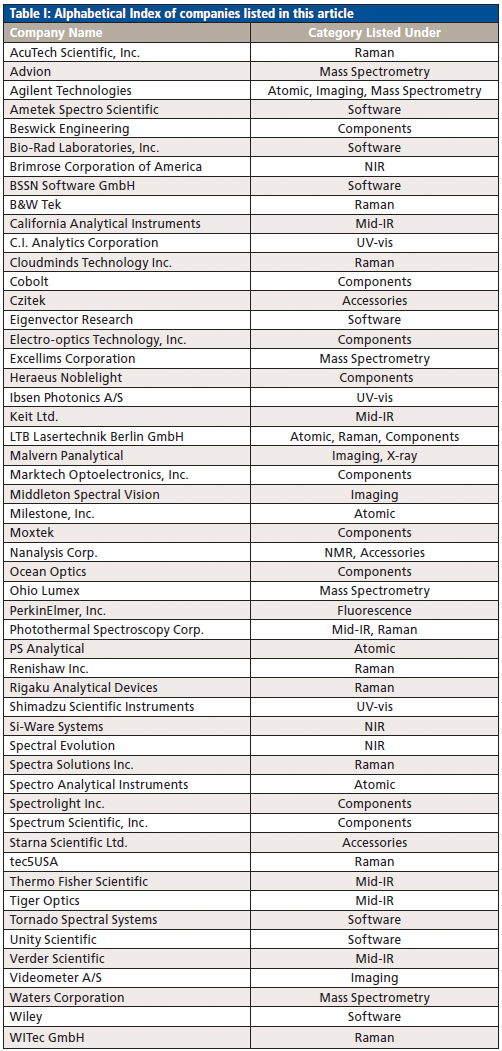
As we've noted almost since first trying to detect instrument trends, the trend toward hyphenated techniques has been coming along slowly, but surely, over the years. A recent twist on that concept, broadening the idea of applying multiple technologies to an analysis, is the packaging of dissimilar, and indeed sometimes even orthogonal, technologies in a single instrument package, without the two technologies necessarily interacting (as hyphenated methods do). In this review, for example, we have at least one instrument giving the capability of applying infrared and Raman spectroscopy to the same sample, and one that incorporates laser induced breakdown spectroscopy (LIBS) with Raman.
Your reviewers are human, and also finite, and, try as we might, cannot know how the future will develop. We therefore solicited some assistance from the people who are on the front lines of the future impact: the companies that will be affected by it, those reported on in this review. While not advanced enough to be called trends yet, sporadic mention of those activities in scientific papers, advertisements, and other discussions and descriptions of instrument performance potentially point in directions that indicate where the future of instrumentation is going.
Atomic Spectroscopy
Table II describes the instruments included in the atomic spectroscopy category.

Advion offers a 90° quadrupole deflector, which has lower interference and improved signal-to-noise ratio, preventing contamination, and thereby produces reliable results quickly and easily.
Agilent's water analyzers reduce the time needed to run water testing methods according to government standards.
LTB Lasertechnik announced has a combination LIBS atomic emission spectrometer and a Raman spectrometer in a single unit.
Milestone's 7th generation Mercury Analyzer completes an analysis in just 5 min, resulting in lower running costs.
PS Analytical provides several dedicated variations of atomic fluorescence mercury monitoring systems to suit specific sampling and measurement situations.
Spectro now has a radial dual side-on interface (DSOI) that is said to provide twice the sensitivity of conventional radial plasma-view instruments and equal the sensitivity of newer vertical-torch dual-view systems, with less complexity. This technology is designed to provide advantages in determining trace element concentrations and handling samples with challenging matrices, including certain wastewaters, soils, and sludges, as well as petrochemical, chemical, high-salts, and metal samples.
Looking at these offerings in the atomic spectroscopy category, a potential emerging trend is for companies to offer specialized products to address occupational health and safety (OHS) concerns and stricter environmental requirements.
Fluorescence
There is just one new fluorescence spectrometer this year (Table III). The PerkinElmer FL 8500 is designed to be an easy-to-use instrument with flexibility to analyze a broad range of sample types and volumes while maintaining sample integrity, with pulse and continuous wave options. The improved signal-to-noise performance allows lower level analyte detection. The device also enables many different experimental setups. Features include phase range, wider wavelength coverage, intuitive software, and interchangeable accessories.

Imaging
Agilent is showing an IR imaging instrument that is said to offer high definition, spatially-resolved images of the chemical components on a flat surface, showing which chemicals are present, and their spatial location.
Malvern Panalytical's Morphologi 4 series of Raman imaging instruments offers sharp and fast measurement of particle size, shape, and chemical identification.
Middleton introduced a multi-mode hyperspectral imaging system for high-volume sampling and "big data" output. The system supports two spectral cameras for sequential hyperspectral imaging of a sample.
Videometer utilizes laser light scattering to measure transmission and reflection spectra. Several models are available, each designed for a different specific measurement situation.
Table IV describes imaging products.
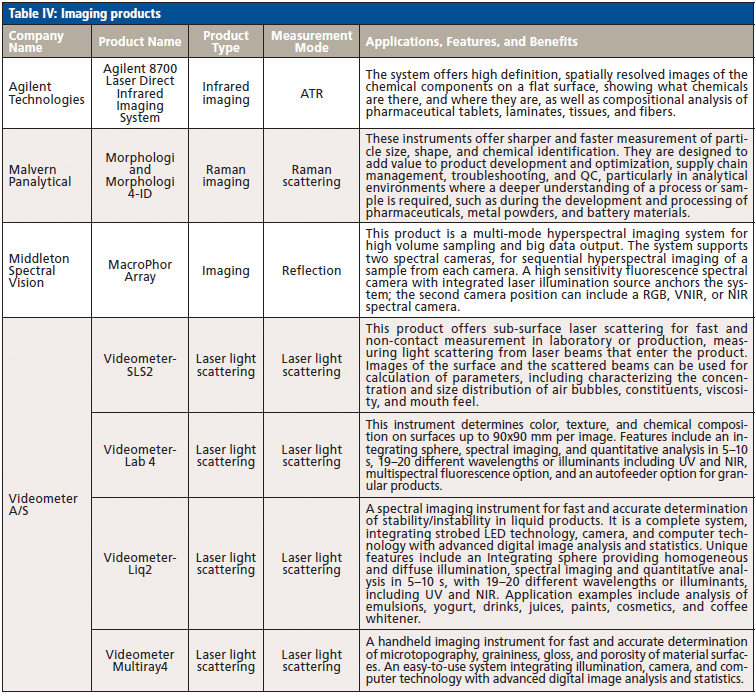
Mass Spectrometry
Advion offers an ICP-MS instrument that has a 90° quadrupole deflector, to provide lower interference and an improved signal-to-noise ratio and prevent contamination, thereby producing reliable results quickly and easily.
Agilent's ICP-MS water analyzers reduce the time needed to run water testing methods when applying government analysis standards.
Excellims has a high-resolving-power ion-mobility mass spectrometer optimized for cleaning validation and similar applications.
Ohio Lumex combines the selectivity of GC with the sensitivity of an ion mobility spectrometer for the analysis of volatiles in the headspace of liquid and solid samples without any sample pretreatment.
The Waters DART QDa combines direct analysis in real time (DART) ionization with their QdA mass detector to create a direct-from-sample analytical system to perform real-time sample recognition. It is aimed at applications in the food market, such as verifying sample authenticity or for detecting adulteration.
Table V presents the mass spectrometry related products for this year's review.
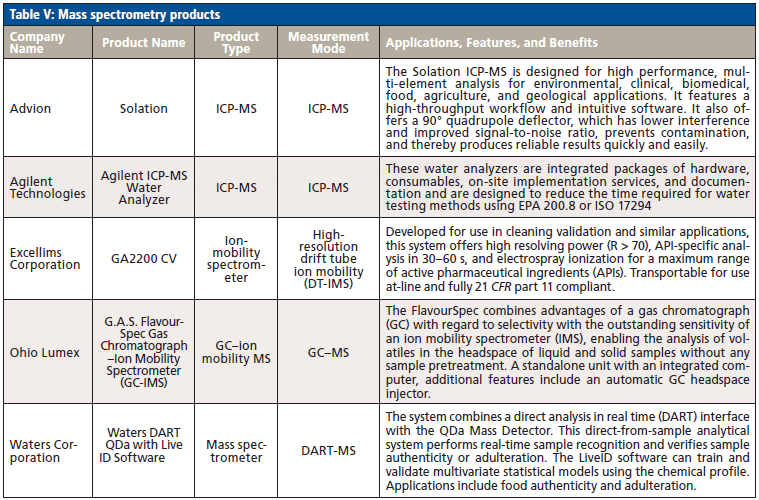
Mid-IR
The 700 series FT-IR instruments from California Analytical Instruments are designed for fast and easy measurement of multiple hot wet gases that absorb in the IR spectral region. Levels can be detected from ppb to the percent range.
Keit shows a rugged process FT-IR spectrometer for in situ monitoring of chemical concentrations in liquids and slurries at pH levels from 0 to 14 in various environments. This instrument also comes in a high-temperature version that can operate with samples at temperatures up to 200 °C.
Ocean Optics' MZ5 is a compact, fully integrated ATR-mid IR spectrometer that measures liquid samples from 1818–909 cm-1 (5.5–11 µm). The MZ5 comprises a sample interface, light source, detector, and software, and provides a fast, convenient mid-IR alternative to traditional FT-IR spectroscopy for laboratory research.
Photothermal Spectroscopy Corp. has a dual-function spectrometer. Infrared and Raman spectra and images can be measured and collected simultaneously from the same measurement point of a sample.
Thermo has two new FT-IR spectrometers based on their IS-5, equipped with a multicolored LED scan bar, displaying instrument status, which allows users to swiftly execute workflows for improved productivity. The second unit is based on the Nicolet Summit spectrometer, and is a compact and rugged unit for busy, multi-user quality assurance (QA) and quality control (QC) laboratories in a variety of industries, such as polymer-chemical, pharmaceutical, food and beverage, forensics, environmental, electronics, and geology.
Tiger Optics offers an instrument claiming the ultimate low-detection of moisture and speed of response.
Verder Scientific incorporates an infrared cell to enable measurement of carbon and sulfur (C/S) for inorganic samples in difficult matrices.
Table VI presents this year's new mid-infrared products.
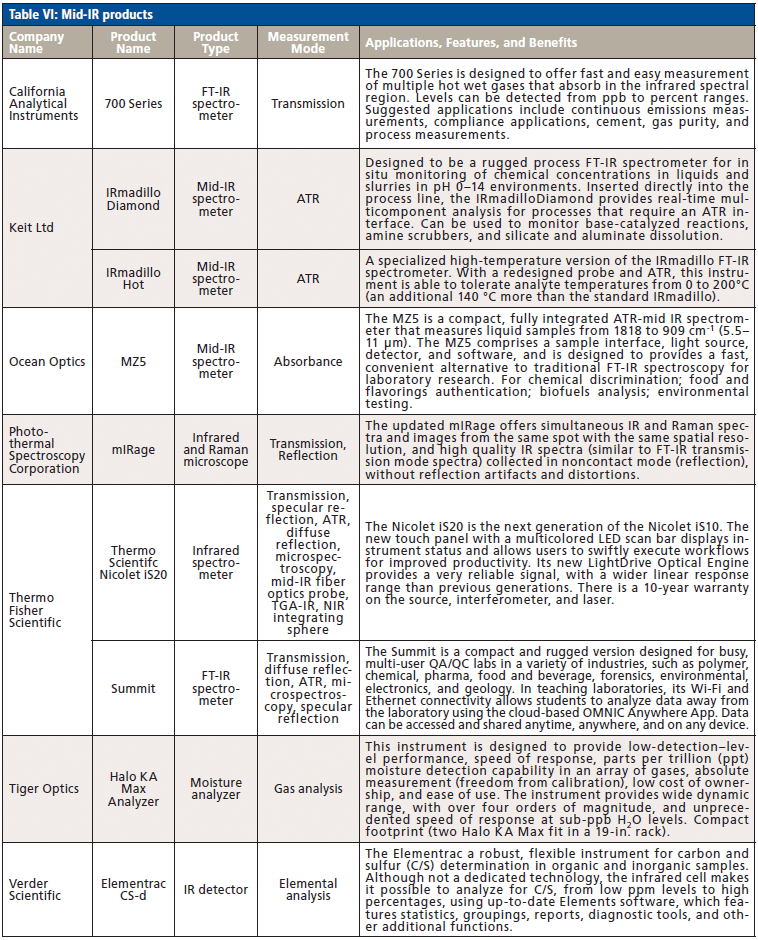
NIR
The NIR sector is seeing the pharmaceutical industry, a major customer, moving to lower cost, smaller, more efficient in-line continuous processing spectrophotometers, requiring a new generation of monitoring instruments, and thus the manufacturers are releasing products to fill that need.
Brimrose provides a wireless, free-space communicating spectrometer, designed to fit into smaller, compact spaces. It is ruggedized, with an Ingress Protection (IP) rating of 65.
Si-Ware Systems offers a miniature and low-cost spectral sensor based on FT-NIR technology. The sensor operates from 1350 to 2500 nm, and is designed for high-volume production with minimal external components. The sensor is intended for applications in farming, food, healthcare, and industry, as well as in consumer-facing applications.
Spectral Evolution has a family of instruments operating in the NIR spectral region. They share a core capability of high resolution with high sensitivity field spectroradiometric operation, and are intended for high-altitude or satellite-based measurements. One member of the family extends to the capability of operation via the IoT, and another member includes an integrating sphere for absolute radiometric calibration.
Table VII presents the near-infrared (NIR) instruments.
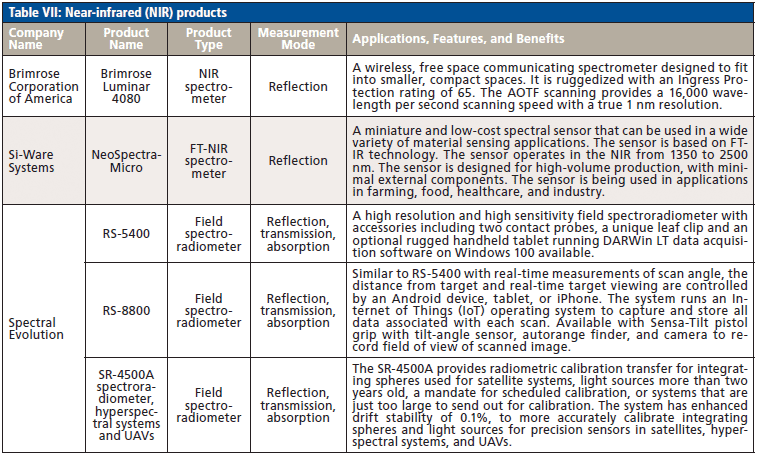
NMR
Future trends within the NMR marketplace involve the pharmaceutical industry, a major source of revenue within that market, seeking lower cost, smaller, more efficient in-line continuous monitoring instruments. To meet that need, Nanalysis offers a high-performance benchtop NMR spectrometer (Table VIII).

Raman Spectroscopy
Acutech provides a pocket-size, lightweight, handheld Raman analyzer for both laboratory and field detection, providing identification of chemicals without sample preparation or contact. Specialized, dedicated versions are available for process monitoring, and for gemstone identification and analysis.
B&W Tek is announcing several models of handheld Raman instruments, each designed for a specialized set of applications.
Cloudminds announced a smartphone based Raman spectrometer, the XI, claimed to be the world's first cloud AI handheld Raman spectrometer. Connecting to the cloud via cellular, WiFi, or bluetooth, this platform allows the user to share data and synchronize instant updates on all devices. Operation of XI is fully automated with an intuitive interface. The device adopts AI deep learning algorithms, enabling faster data analysis with high accuracy.
LTB Lasertechnik launched an instrument that combines a LIBS atomic emission spectrometer and a Raman spectrometer into a single unit.
Photothermal Spectroscopy Corp. has a dual-function spectrometer. Infrared and Raman spectra and images can be measured and collected simultaneously from the same point on a sample.
Renishaw presents a compact benchtop Raman imaging system, designed for biological and clinical research. This instrument enables the rapid collection of detailed information from a range of biological samples, including tissues and biofluids.
Rigaku combines a standard library of over 13,000 chemicals using a 1064 nm laser for identifying colored substances, or scanning through colored packaging.
Spectra Solutions showed two Raman products. One is a portable battery-operated Raman spectrometer, and the other is a removable fiber optic Raman measurement probe.
Tec5USA's Raman spectrometer, designed for industrial environments, includes multiple lasers as the sources for the Raman excitation.
WITec's ParticleScout is a particle analysis tool for the alpha300 Raman microscope series. The device surveys, categorizes, analyzes, quantifies, and identifies particles, even over large sampling areas.
Table IX presents the properties of the new Raman instruments.

Software
The term software, in the context of this review, consists of several different, albeit related, types of products. Actual computer programs, compilations of spectra, databases, and collections of chemometric calibration models are all included in this category.
The ability to share information via vendor neutral archiving using the public domain data standard, Analytical Information Markup Language (AnIML), is a desirable goal. However, it remains to be seen if this will be widely implemented by the spectroscopy community. If so, this capability will enable detail reviewing, visualization, and reporting, even across different techniques and platforms.
Domain-specific processing and data sharing capabilities are upcoming requirements for research and development (R&D) and QC departments within the spectroscopy user community. The AnIML industry data standard and related software implementations greatly help to enforce these requirements in a regulatory-compliant manner.
Operators of laboratory and at-line instrumentation are becoming increasingly responsible for many other duties in production plants, reducing the time and resources available to spend on training and learning underlying technologies. Instrument networking allows production plants to train operators to analyze samples and perform basic diagnostic tests, while remote internal or supplier experts are able to configure, monitor, and troubleshoot instrumentation.
Ametek now provides basic and Pro versions of TruVu software to integrate with the Spectro Scientific MiniLab on-site oil analysis system. The TruVu 360 Basic system for a single user can be installed on either a local computer or a company network server. It features multiple user licenses, which include site user, operator and reader privileges.
Bio-Rad offers a new software package for identification of unknowns using Raman or IR spectra, combined with an appropriate corresponding spectral library.
BSSN Software GmbH harmonizes data sets from biology and other measurement techniques, and brings raw data, results, and metadata to the user's fingertips.
Eigenvector has upgraded both the PLS Toolbox and the Solo stand-alone software, to include new chemometric methods of analyzing the data.
Tornado offers security, productivity, and industrial control modules, with each module integrating a single platform, and allowing fast and accurate results.
Unity Scientific provides an advanced suite of digital tools designed for the secure configuration, monitoring, and data reporting of NIR analyzers over the internet.
Wiley continues to expand its libraries of spectra collections.
Table X describes software offerings.
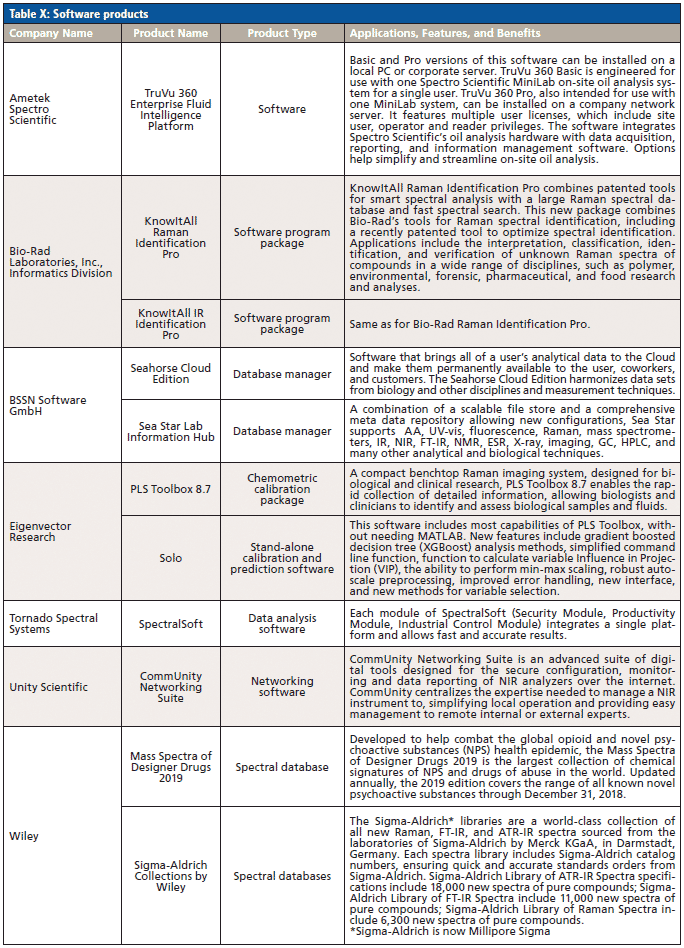
UV-vis
C.I. Analytics uses a dry colorimetric method to analyze several types of gases, and includes electronic corrections to avoid biased results.
Ibsen combines a compact form factor of 17-mm x 15-mm x 8-mm with high sensitivity and environmental ruggedness.
Shimadzu offers a workhorse UV-vis spectrophotometer that is easy-to-operate, with an intuitive on-screen user interface and automated data analysis.
Table XI presents UV-vis products.
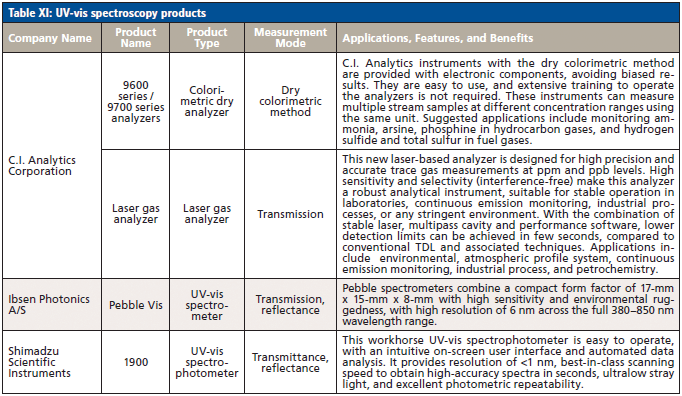
X-ray
Malvern Panalytical provides two X-ray instruments (Table XII); both can run fully automated measurements. The Empyrean is multipurpose diffractometer that allows measurements without any manual intervention, and also does X-ray scattering and imaging. The Epsilon4 is a highly upgraded version of this X-ray spectrometer.

Accessories
Czitek presents an infrared microspectroscopy accessory to provide microanalysis capabilities.
Nanalysis offers two accessories for its benchtop NMR instrument. The AutoSample-60 allows interconversion between autosampler and manual mode, and provides data acquisition and processing controlled through the onboard software. The NMReadyFlow replaces standard NMR sample tubes with continuous flow measurement capability.
Starna offers several different standard reference materials (SRM), both solids and liquids, for standardizing fluorescence instruments.
Table XIII presents spectroscopic accessories.
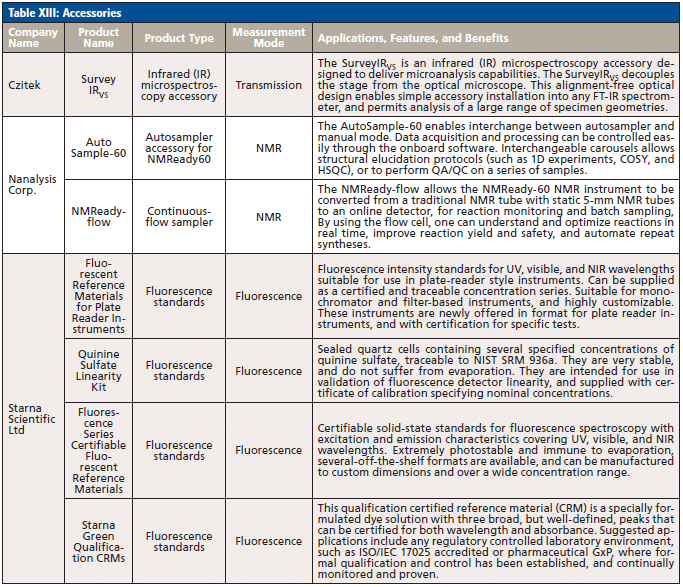
Components
Beswick Engineering provides tubing connectors for 1/32" tubing, both with and without a second seal to the tubing outside diameter (o.d.), affording leak-free connections.
Electro-Optics Technology provides broadband and narrowband electro-optic isolators.
Heraeus Noblelight has the first broadband UV-light emitting diode (LED) light source module for portable handheld analytical instruments. The compact module incorporates the light source, optical fiber coupling, and power source, with controls providing original equipment manufacturers (OEMs), resulting in lower optical setup costs and reduced product launch time.
LTB Lasertechnik has a high-resolution double echelle monochromator, for a wavelength range from 600 to 1700 nm (0.6 to 1.7 µm) and a resolution of 60,000.
Marktech's new processing allows p-i-n junction (PIN) photodiodes to be specified within virtually any application where high-sensitivity, low-noise performance, and long-term stability against UV and gamma radiation levels are required.
Moxtek shows wire grid polarizers that absorb s-polarization from 400 to 700 nm, with ±25° angle of incidence.
Ocean Optics' LEDs are now available in wavelengths ranging across the ultraviolet, visible, and NIR regions, as well as broadband spectra. They also offer PixelSensor multispectral sensors that pack up to 8 wavelength-selective photodiodes on each chip.
Spectrolight shows a compact, fully automated, optomechanical device that allows simultaneous center wavelength and bandwidth adjustment, spanning the entire visible spectrum, with a circular uniform aperture.
Spectrum Scientific is showing free-form mirrors that allow an optical design to have different characteristics in different directions.
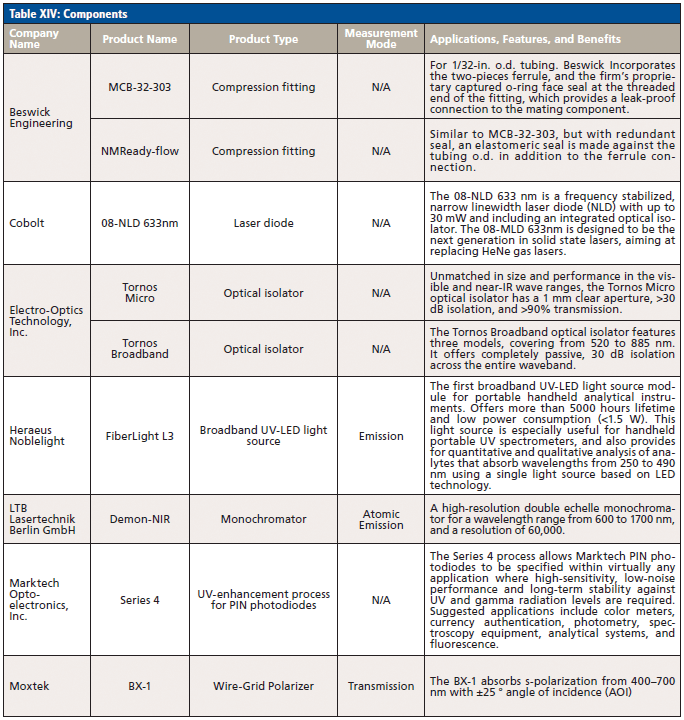
Table XIV presents descriptions of spectroscopic components.
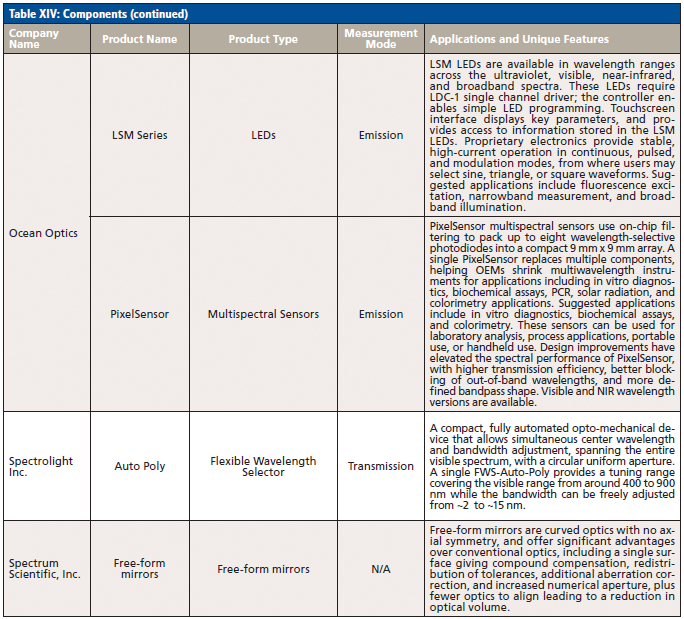
Howard Mark serves on the Editorial Advisory Board of Spectroscopy and is a regular coauthor of the "Chemometrics in Spectroscopy" column. He also runs a consulting service, Mark Electronics, in Suffern, New York. Direct correspondence to hlmark@nearinfrared.com
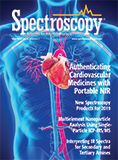
High-Speed Laser MS for Precise, Prep-Free Environmental Particle Tracking
April 21st 2025Scientists at Oak Ridge National Laboratory have demonstrated that a fast, laser-based mass spectrometry method—LA-ICP-TOF-MS—can accurately detect and identify airborne environmental particles, including toxic metal particles like ruthenium, without the need for complex sample preparation. The work offers a breakthrough in rapid, high-resolution analysis of environmental pollutants.
New Study Reveals Insights into Phenol’s Behavior in Ice
April 16th 2025A new study published in Spectrochimica Acta Part A by Dominik Heger and colleagues at Masaryk University reveals that phenol's photophysical properties change significantly when frozen, potentially enabling its breakdown by sunlight in icy environments.
New Raman Spectroscopy Method Enhances Real-Time Monitoring Across Fermentation Processes
April 15th 2025Researchers at Delft University of Technology have developed a novel method using single compound spectra to enhance the transferability and accuracy of Raman spectroscopy models for real-time fermentation monitoring.